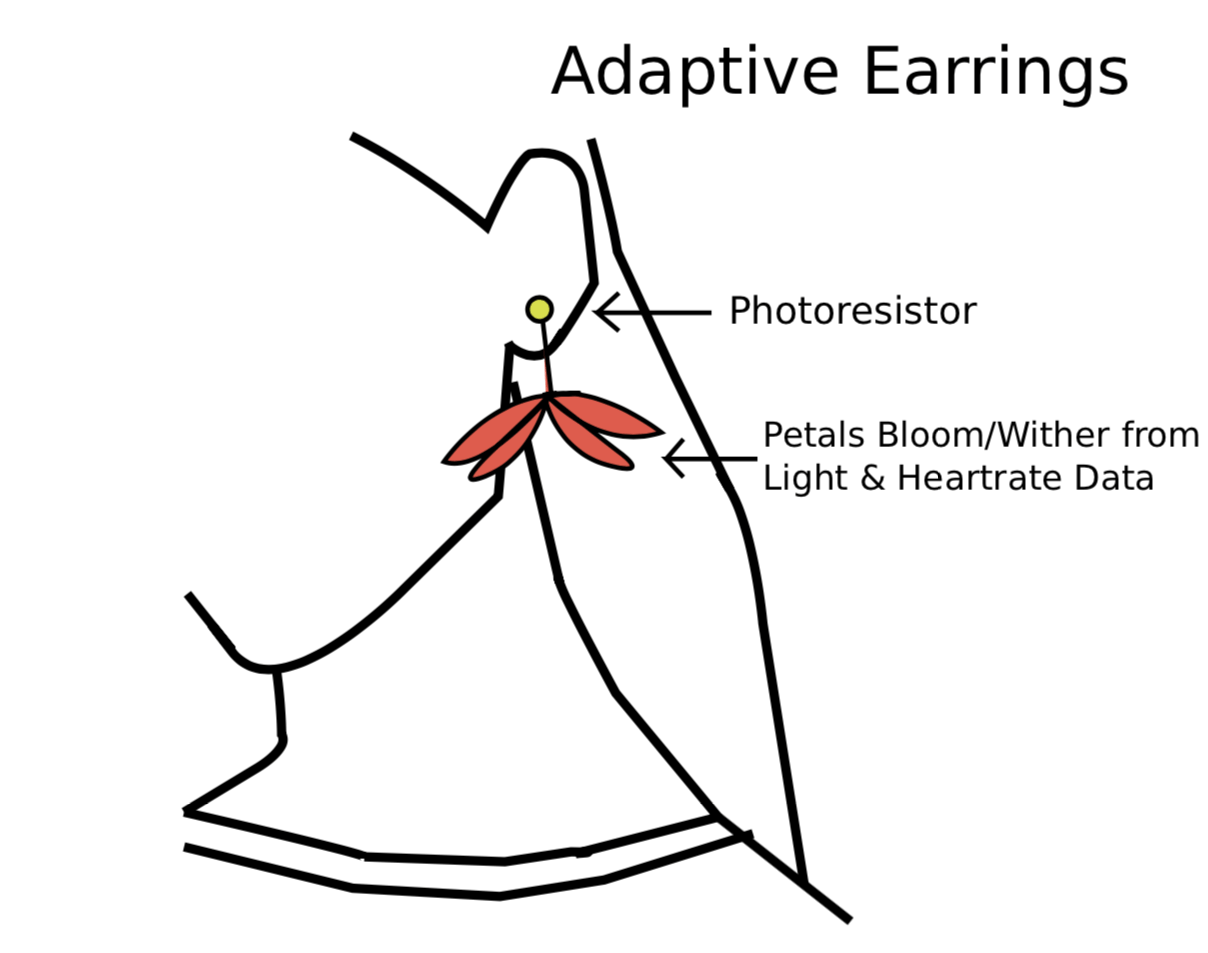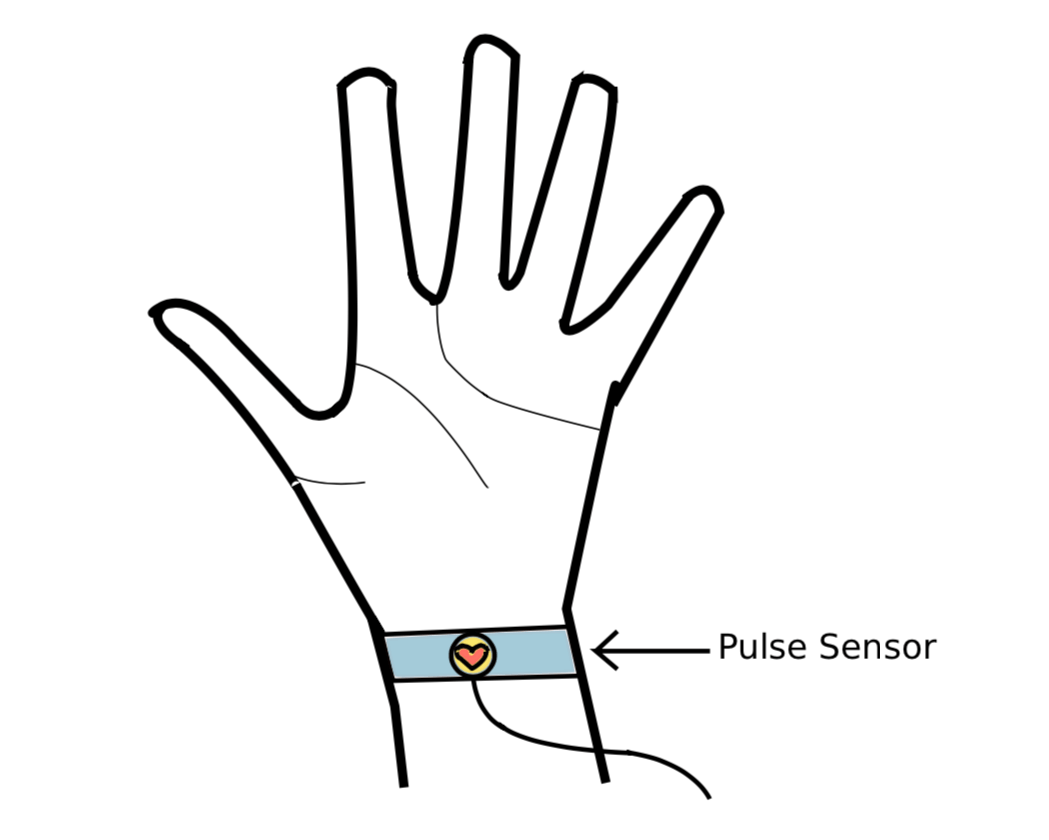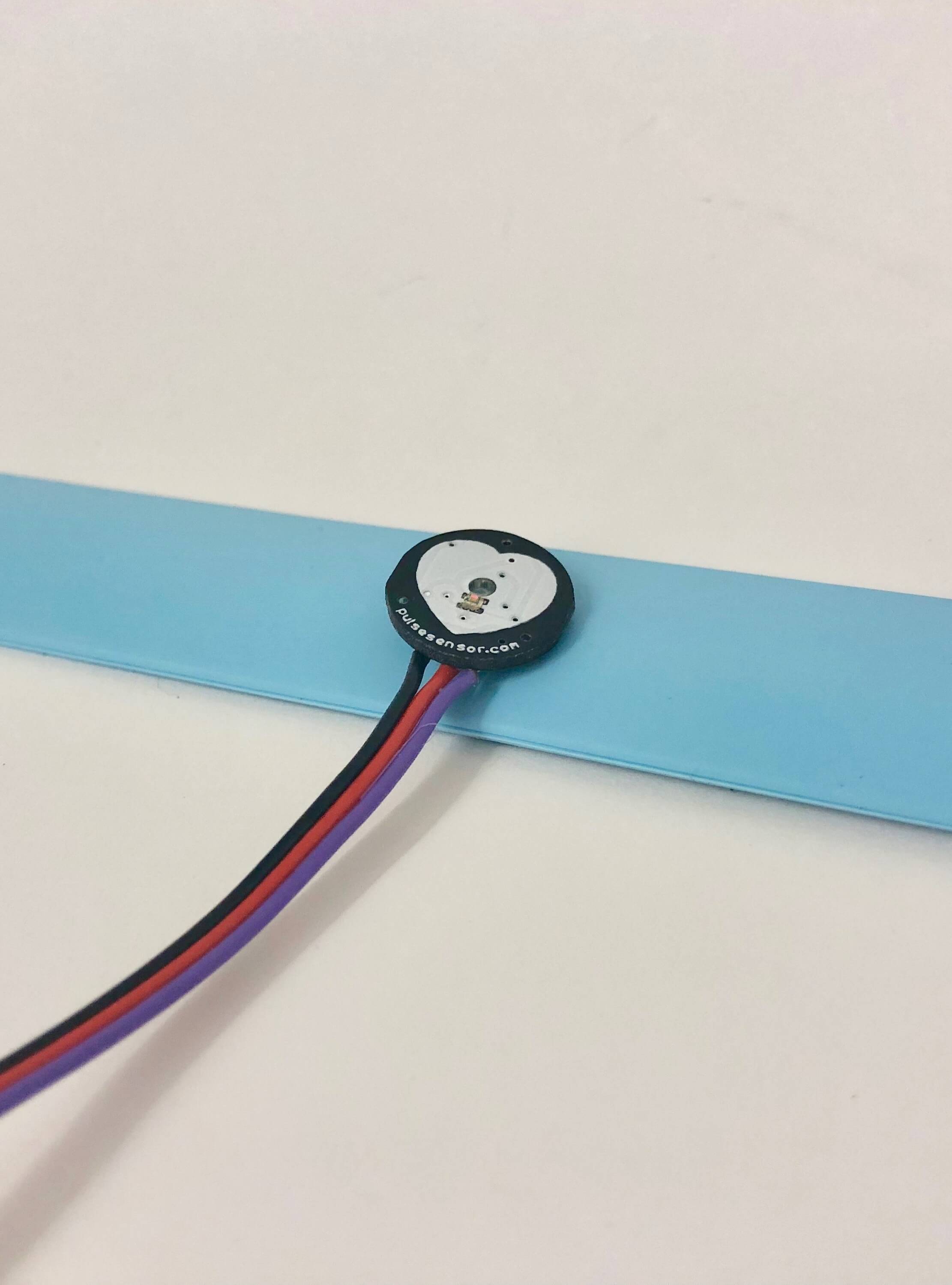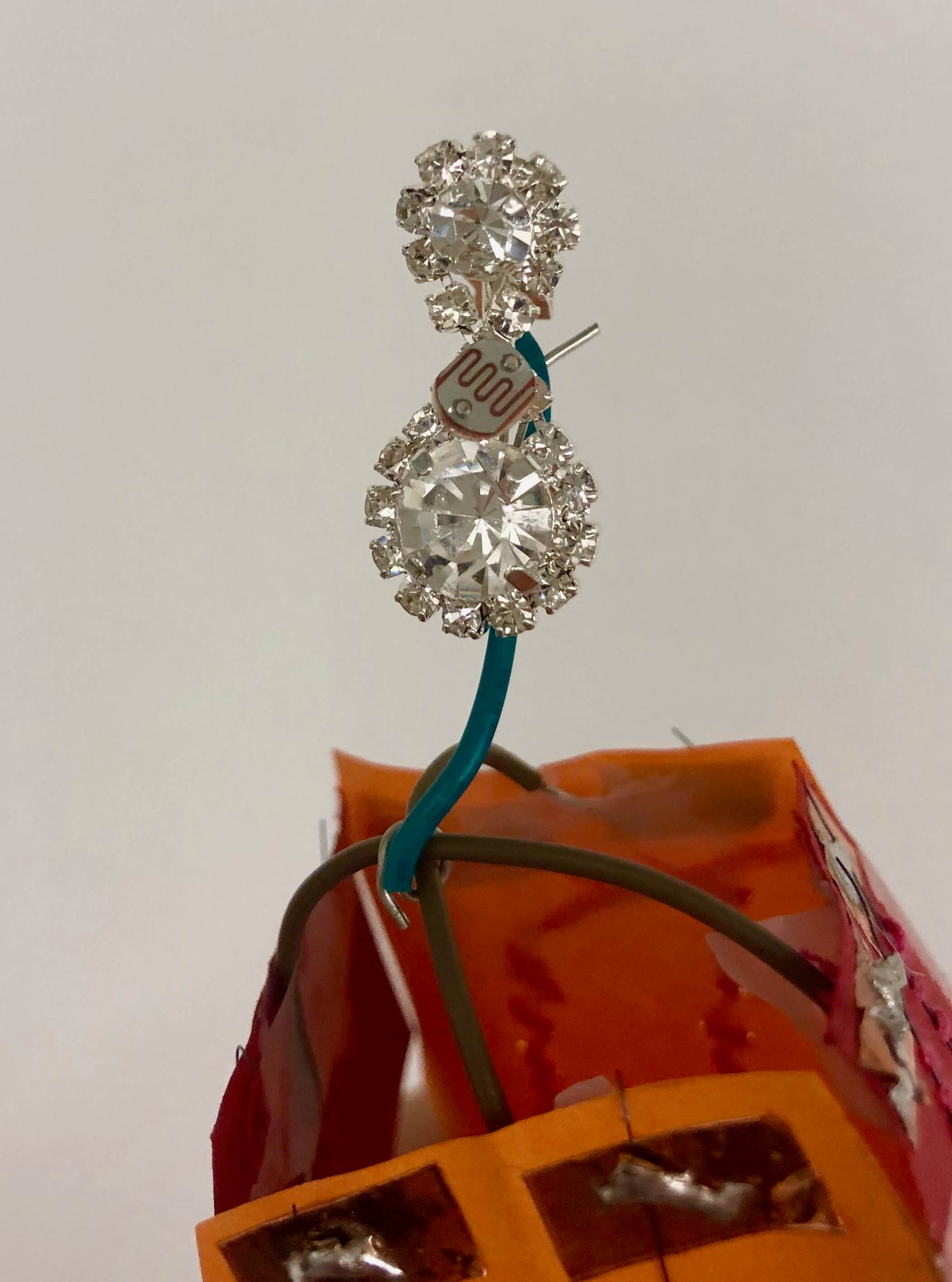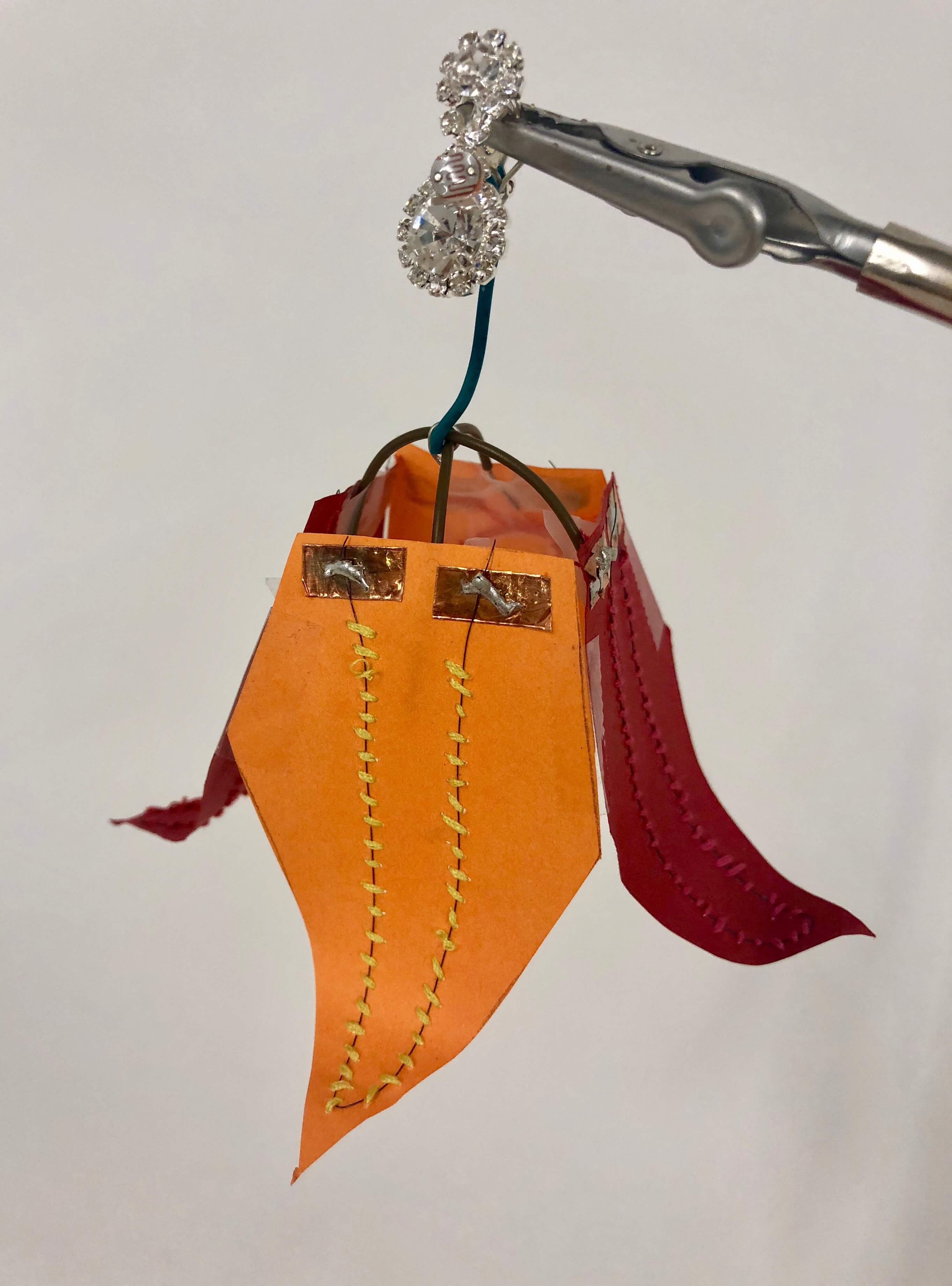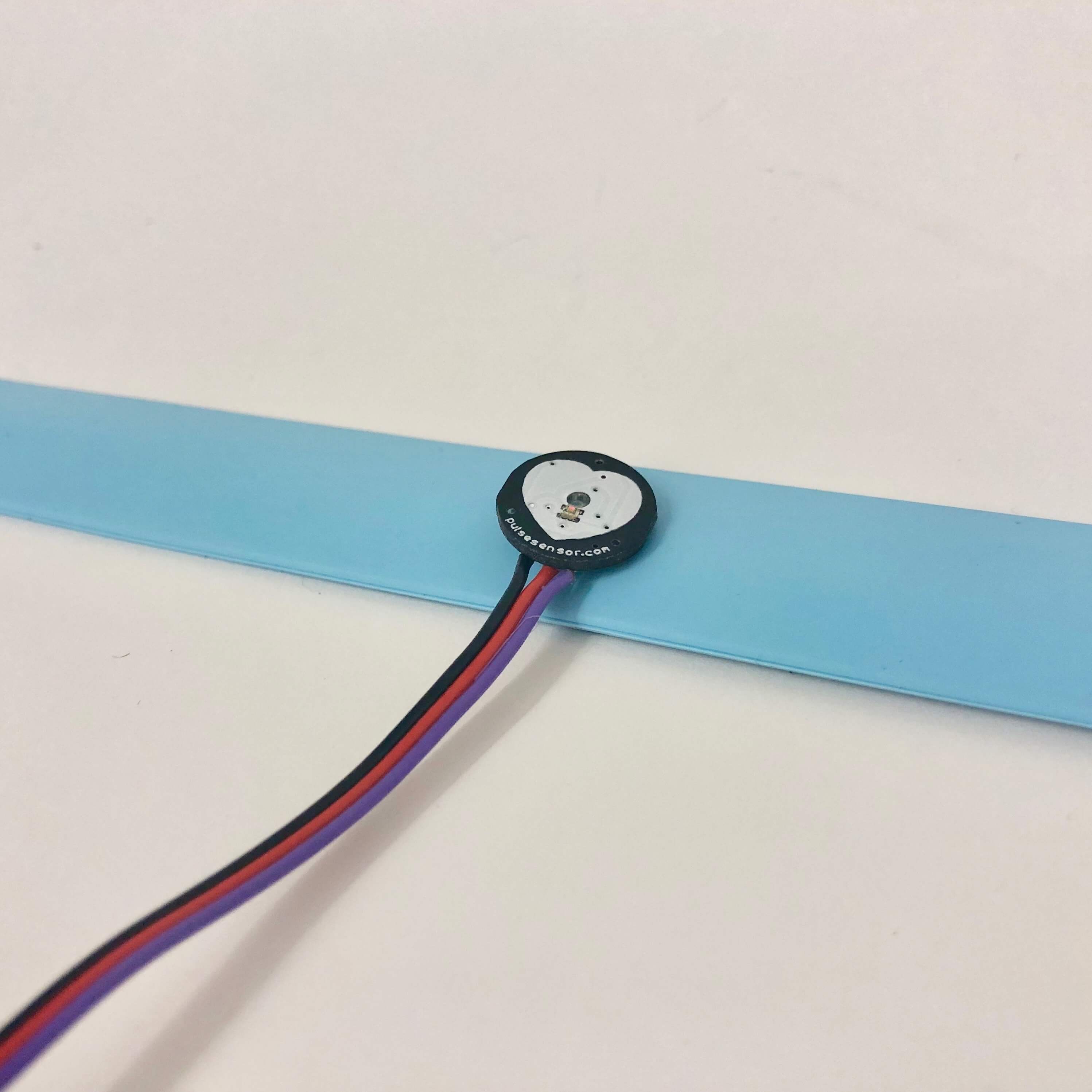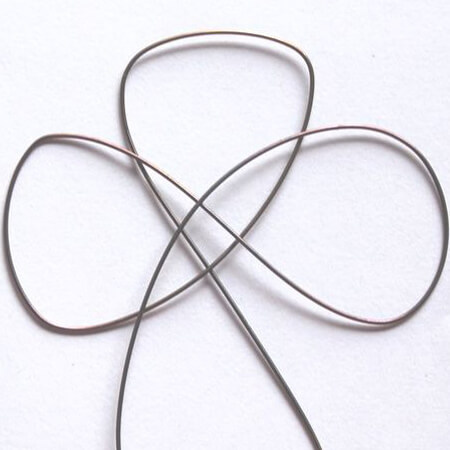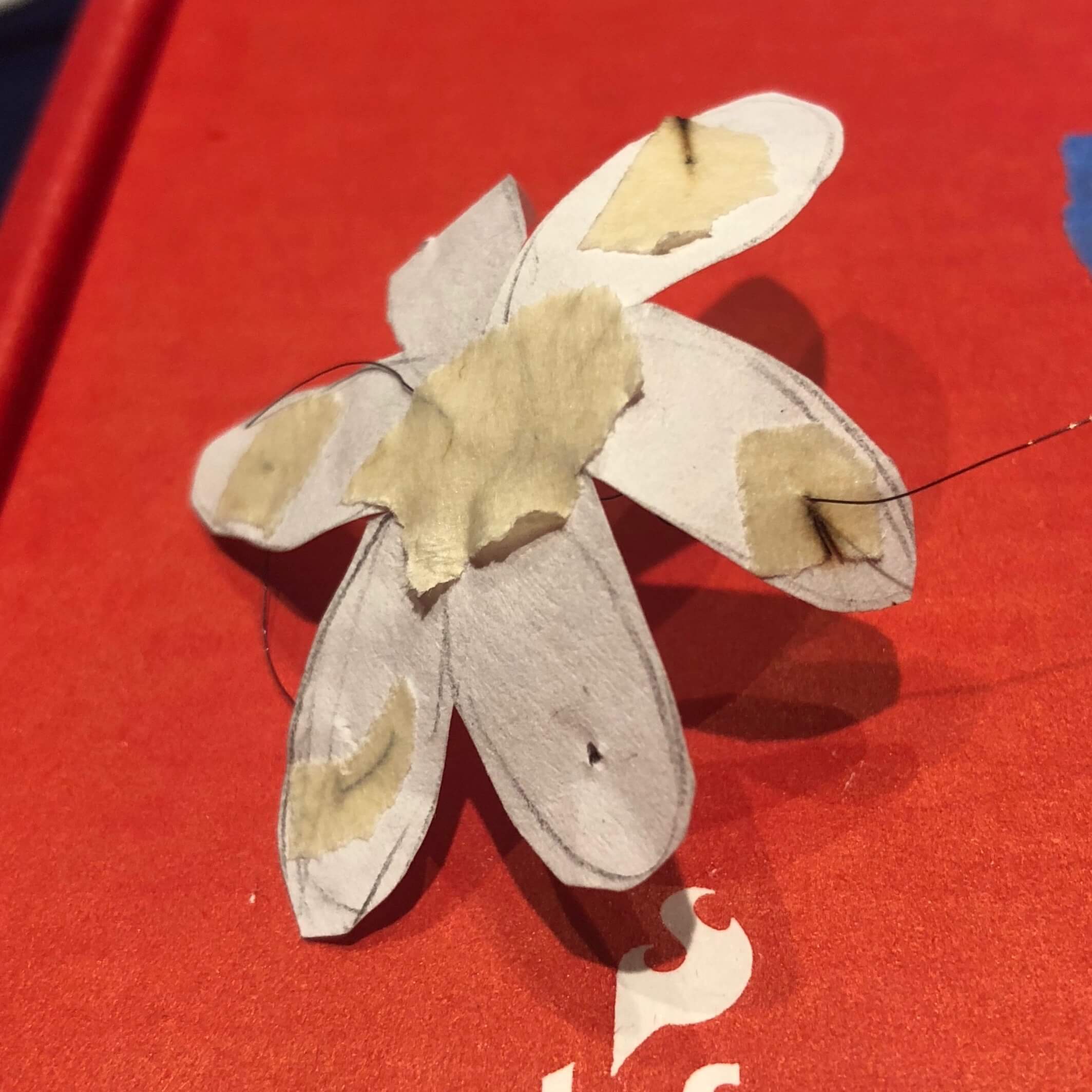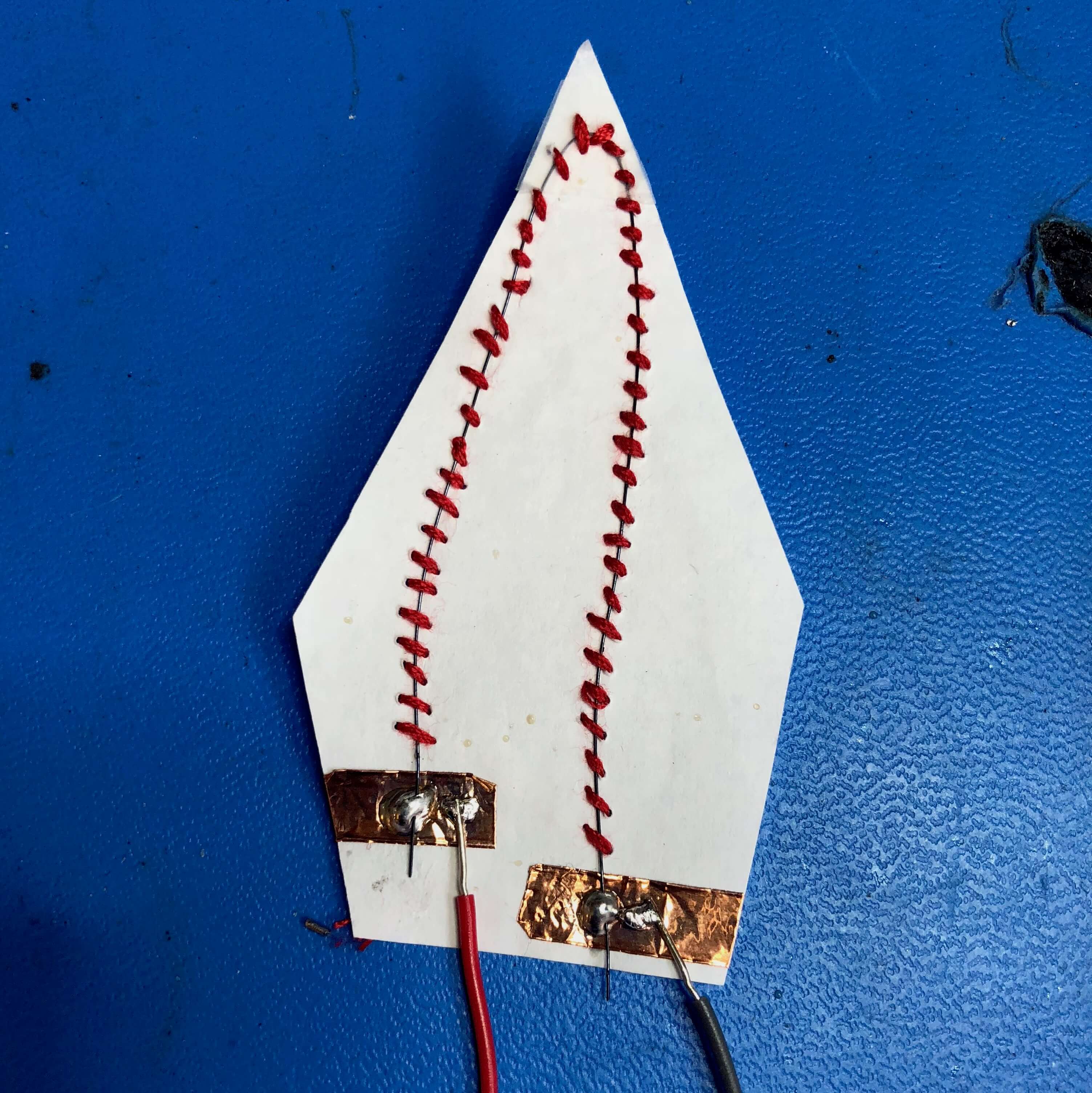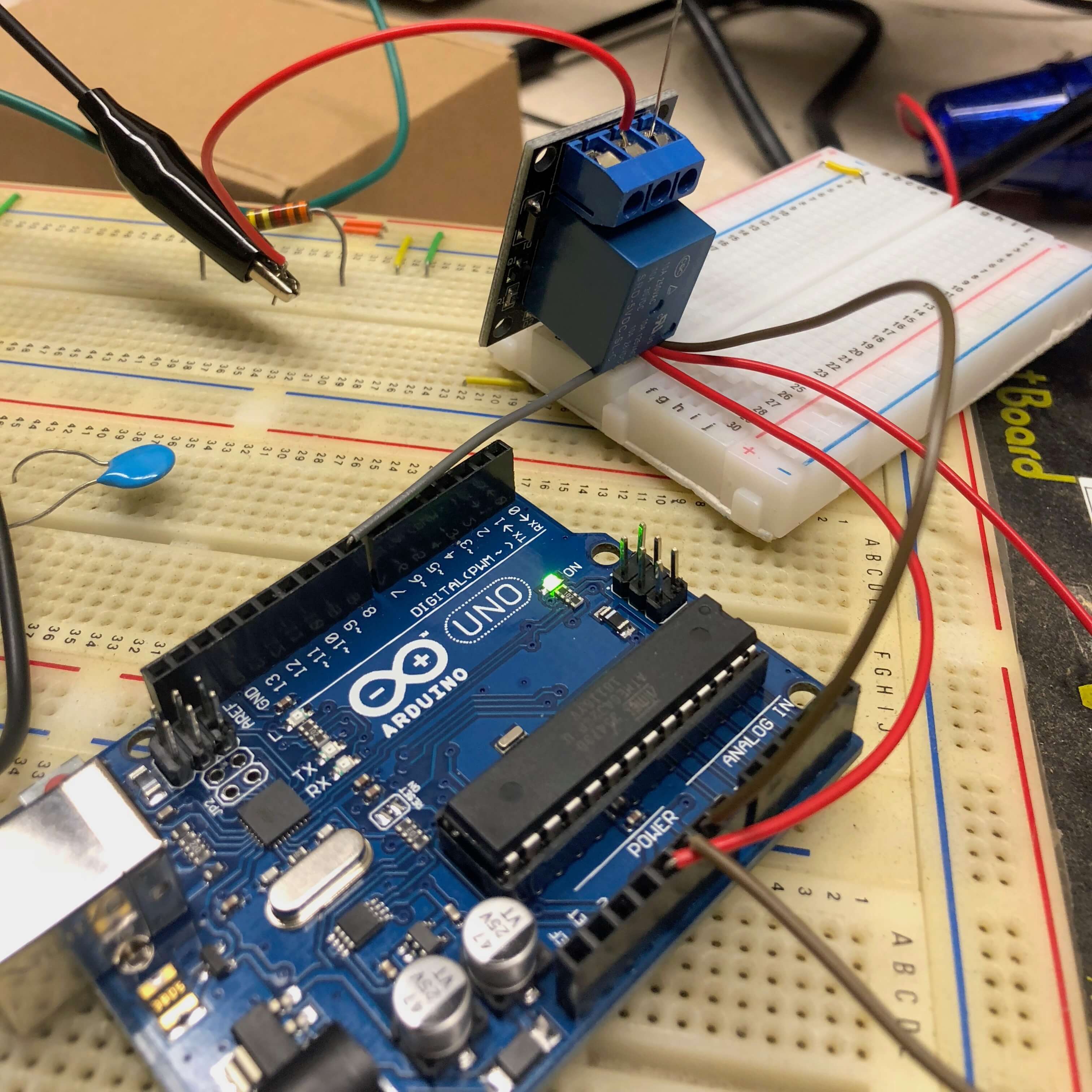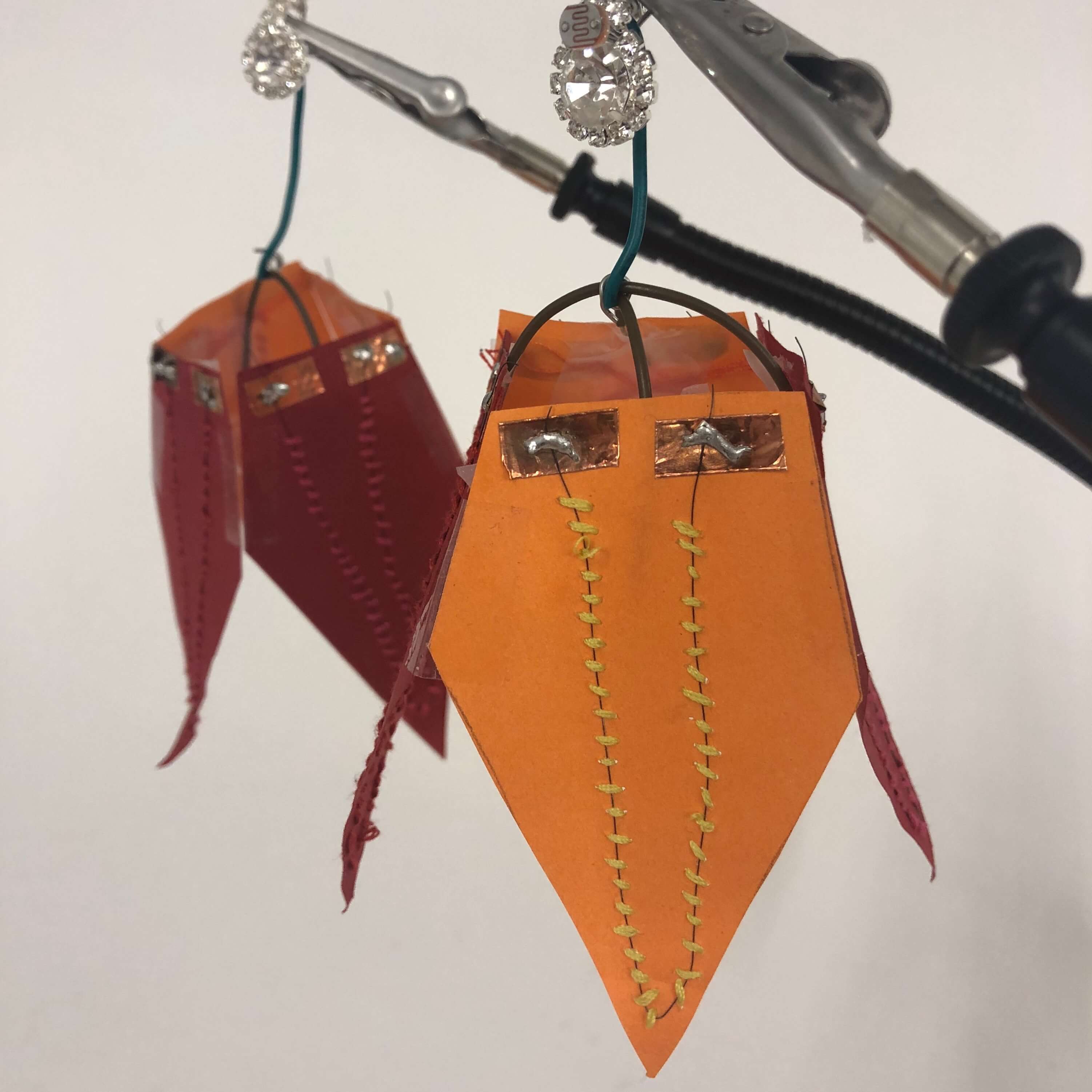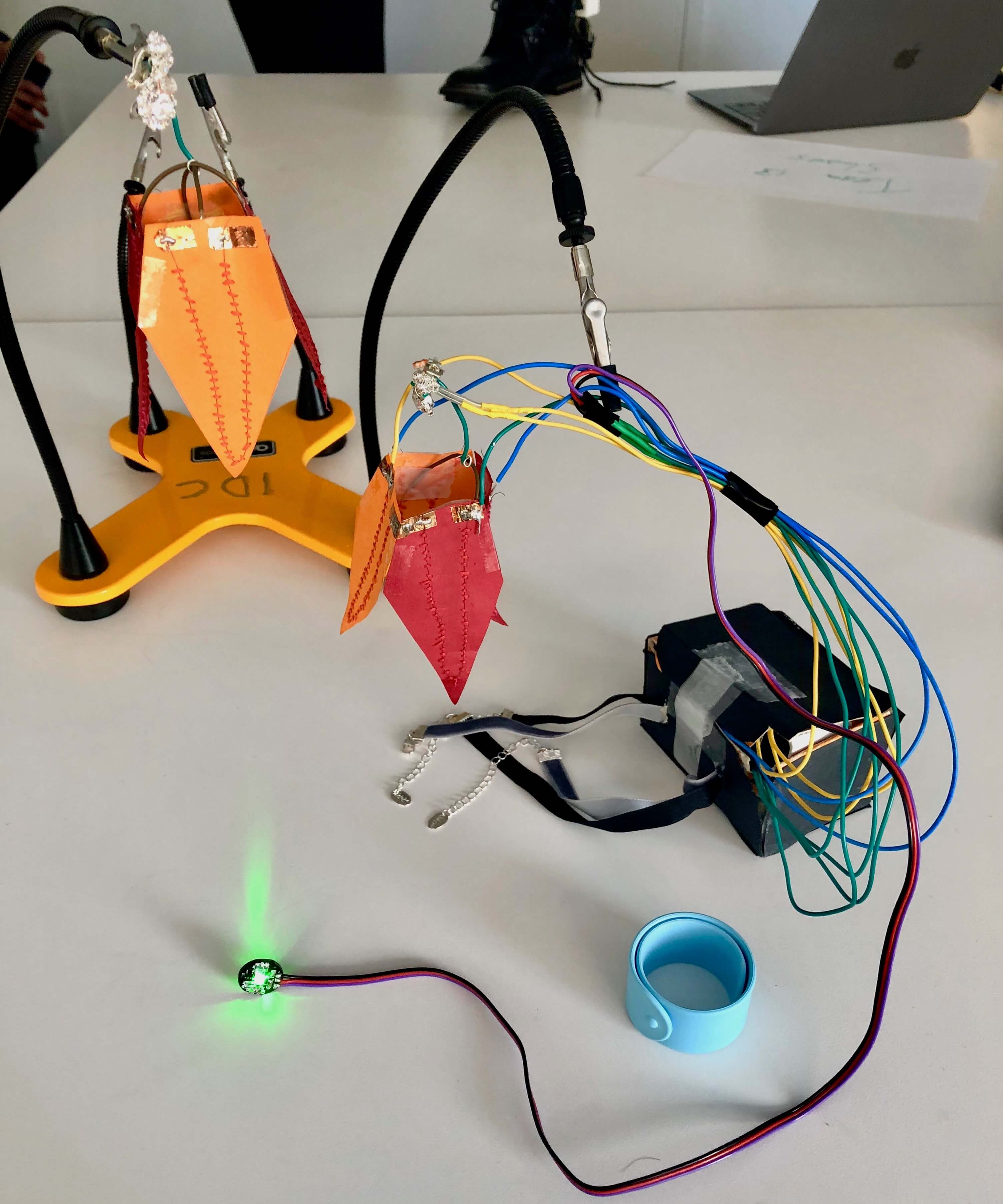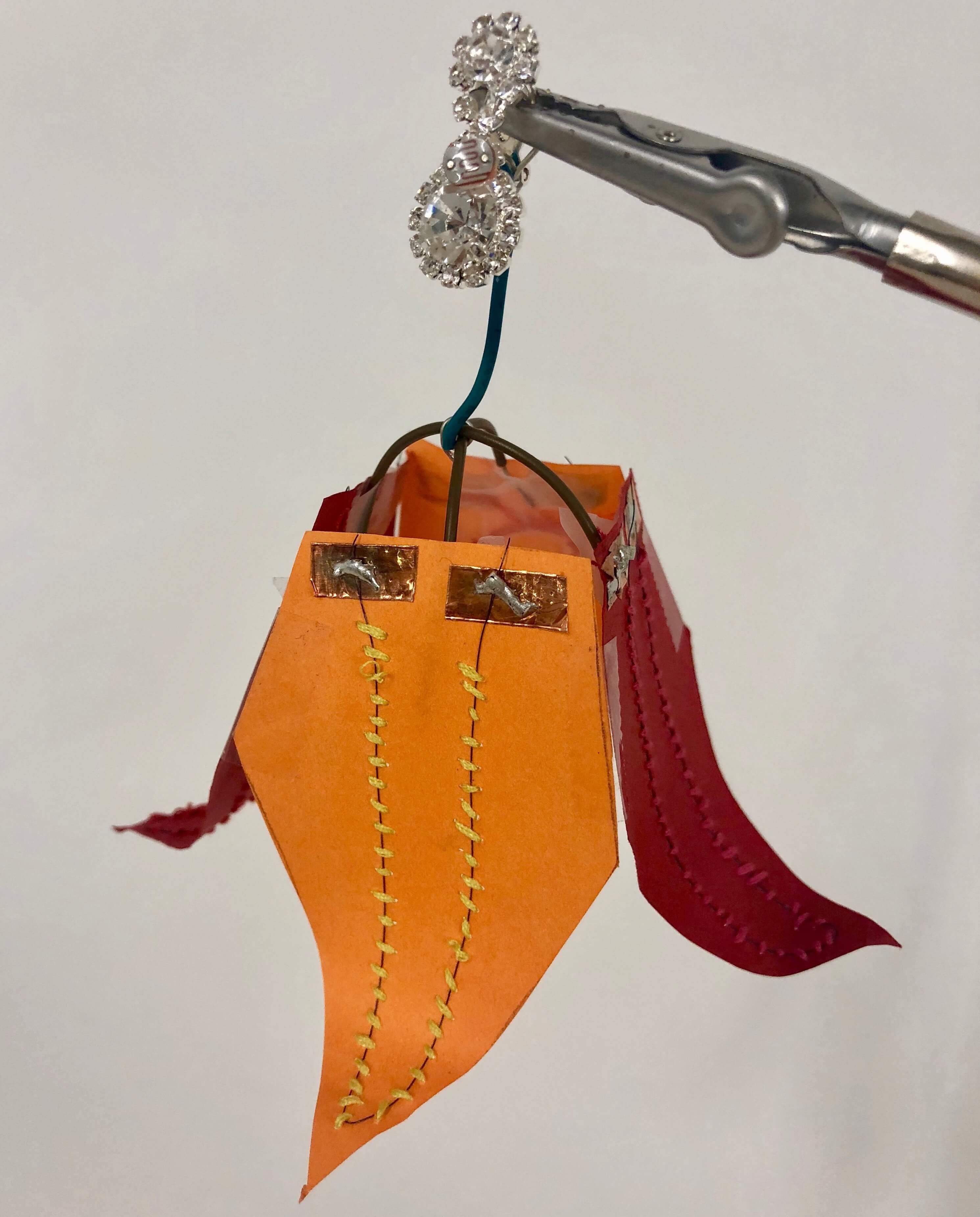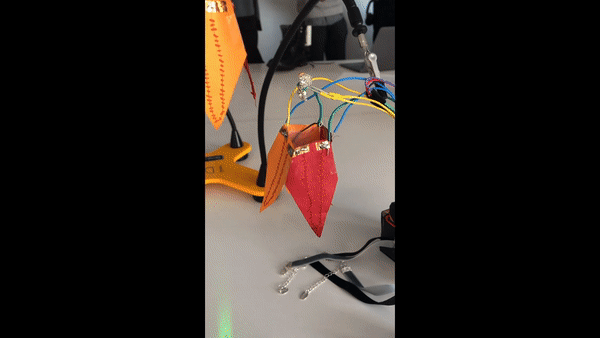About
Sometimes when people are running or doing hard work, the accessories they wear can get in the way, and they would take the accessories off to avoid inconvenience. What if the accessory itself can adjust its shape according to the physical state of the wearer?
People also adjust their choice of accessories according to the weather, the social occasions they are about to attend, the color themes of their clothing, etc. What if the accessory itself can make changes in response to these factors?
We designed a type of flower-shaped earrings that can:- Open or close its petals, depending on whether the wearer has a low or high heart rate.
- Change the shape of its petals, according to the light intensity of its surroundings.
Photoresistors are integrated onto the earrings themselves to measure light intensity. To measure the heart rate, we paired our earrings with a wristband and finger strap for pulse sensor. An arduino is strapped to the back of the user’s neck, connected with both earrings by wires.
